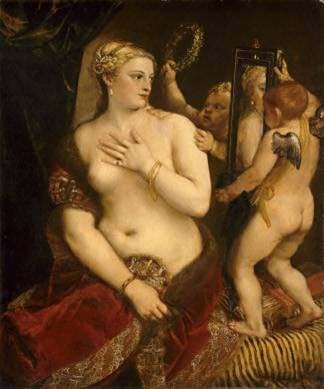Titian, Tintoretto, Veronese
dal 14/9/2009 al 3/1/2010
Segnalato da
14/9/2009
Titian, Tintoretto, Veronese
Musee du Louvre, Paris
Rivals in Renaissance Venice

Exhibition curators: Jean Habert, Curator in Charge, and Vincent Delieuvin, curator, assisted by Arturo Galansino, scientific
consultant, Department of Paintings, Musée du Louvre.
A major event at the Louvre: powerful canvases by the greatest
Venetian painters of the sixteenth century are presented side by
side in Napoleon Hall in an exhibition allowing visitors to
observe the play of inspiration and admiration between these
geniuses as well as the competitive nature of their artistic
dialogue. Including eighty-five canvases, most of which have
been loaned for the occasion by prestigious museums worldwide,
the exhibition brings this noble rivalry into focus through
juxtapositions of paintings treating the same or equivalent
themes, thus demonstrating just how much these artists were
influenced by one another or instead used their paintings as
critiques or to put forward their own personal interpretations.
Although Titian, named official painter to the Republic in 1516,
dominated the Venetian art scene, the arrival of later
generations—Bassano, Tintoretto, Veronese, Palma the
Younger—and the influence of artistic developments in central
Italy, resulted in novel treatments of subjects favored by
Venetian artists in the second half of the sixteenth century.
"Because he had a formidable rival in Veronese, Tintoretto was
especially creative and daring in his paintings, since in the face of
such competition, any artist is inclined to make it a point of honor
not to be outdone."
These views expressed by Carlo Ridolfi in 1642 are certainly not
limited to Tintoretto and Veronese. All major Venetian painters of
this period modeled their approach to their art on those of their
contemporaries, the preeminent figure among whom was, without
any doubt, the uncontested and unequaled master Titian. Rivalry thus
played a major role in shaping the development of Venetian painting.
The unique political regime of the Republic of Venice and its social
structure largely favored artistic diversity. The presence of numerous
wealthy families, whether of noble descent or not, the importance of
the Church during this vibrant period of Counter-Reformation, and
the network of powerful charitable fraternities or guilds, called
scuole, meant that the scene was rife with work opportunities for
artists, at a time when the awarding of commissions was decided
with great freedom. The desire to attract the attentions of these
various patrons gave rise, perhaps more than in any other place or
time, to a climate of constant one-upmanship among painters. This
rivalry would be officially recognized and further fomented through
the competitions organized for the most prestigious commissions, as
is done today for major architecture projects. This was the case, in
particular, for the decoration of the Biblioteca Marciana, the Scuola
di San Rocco, and most important of all, the Sala del Maggior
Consiglio (Grand Council Chamber) in the Palazzo Ducale (Doges’ Palace).
In addition, Venetian artists of the latter half of the sixteenth century
were confronted with the innovations and challenges brought by
Mannerism. This little-known aspect of Venetian painting is also
addressed within the exhibition, which explores the ways in which
artists working in La Serenissima crafted a unique style, adapting the
Mannerism of central Italy to their naturalistic world vision.
This exhibition is organized by the
Musée du Louvre and the Museum of
Fine Arts, Boston.
Eni is the main sponsor of this
exhibition, which is also made
possible thanks to the support and
technological assistance provided by
Dai Nippon Printing Co., Ltd.
With France 2, France Inter, Le Parisien
and Paris Match as media partners,
And Thalys, ENIT (the Italian government
tourist board), Alitalia and Air France as exhibition partners.
Image: Tiziano Vecellio, called Titian (1488/90–1576), Venus with a Mirror, Oil on canvas, 1.25 m x 1.05m, Andrew W. Mellon Collection 1937.1.34, National Gallery of Art, Washington © Courtesy Board of Trustees of The National Gallery of Art, Washington
Musée du Louvre / Communications Aggy Lerolle aggy.lerolle@louvre.fr
Press relations Céline Dauvergne +33 (0)1 40 20 84 66 / 54 52 (fax) celine.dauvergne@louvre.fr
Press opening
Tuesday, September 15, 2009, from 2:30 p.m. to 5:30 p.m.
Musée du Louvre
Rue de Rivoli 75001 Paris
Hours
Open daily except Tuesdays from 9 a.m. to
6 p.m., until 8 p.m. on Saturdays, and until by Philip Cottrell, University College, Dublin
10 p.m. on Wednesdays and Fridays.
Admission fees
Titian, Tintoretto, Veronese: Rivals in Renaissance Venice only: €11
Permanent collections + Titian, Tintoretto, Veronese: Rivals in Renaissance Venice:
€14 before 6 p.m., €12 after 6 p.m. on Wednesdays and Fridays
Free admission for youths under 18



